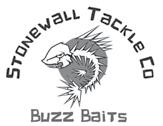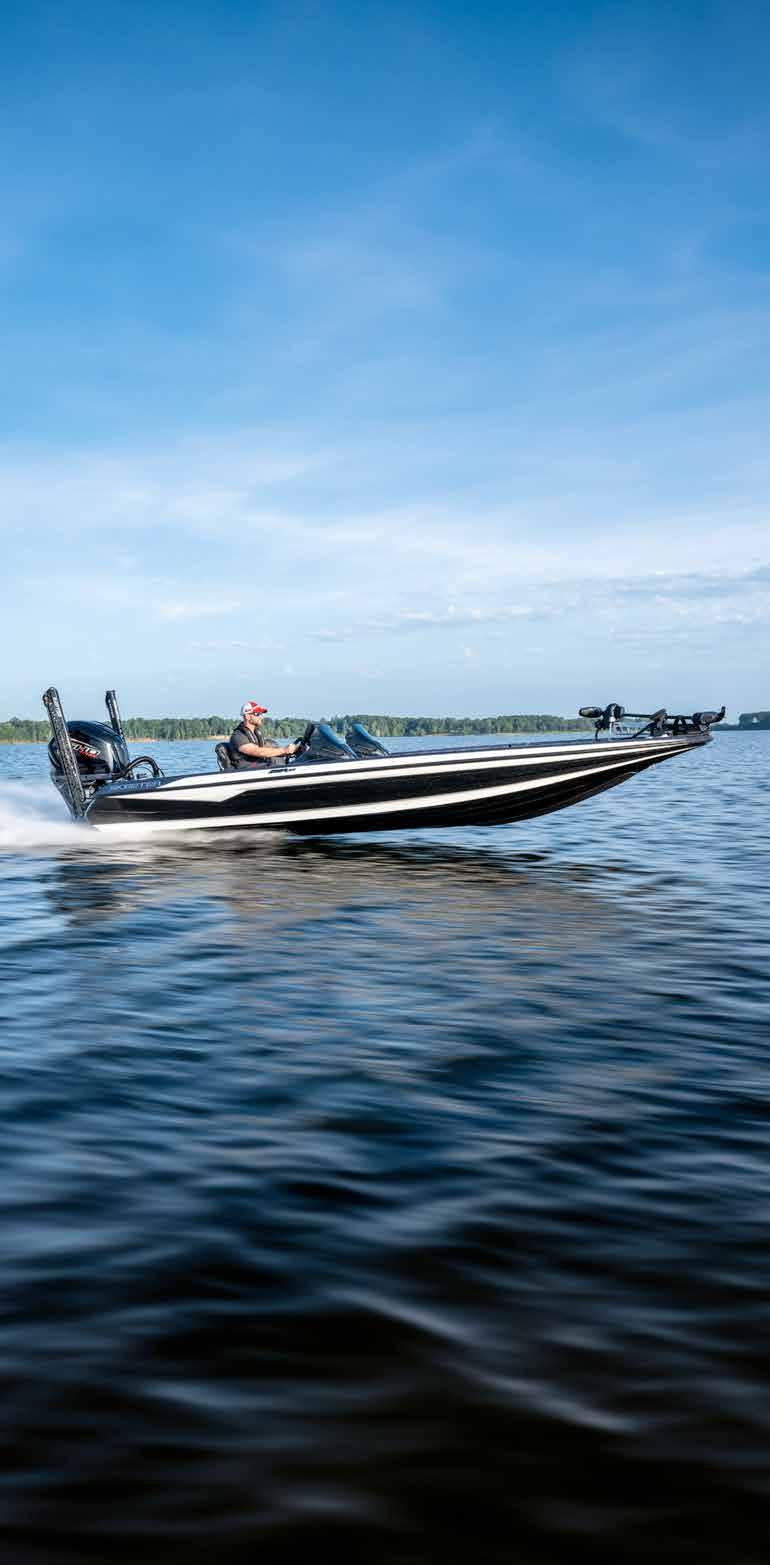




For Lone Star outdoor newS
The windows of opportunity for recre ational anglers, charter boats, and party boats to safely navigate the offshore wa ters of the Gulf of Mexico have been few and far between recently. When short periods of calm seas have prevailed, catches of swordfish, tuna, wahoo, grou per, state water red snapper, vermilion snapper, and more have been consis tent.
Charter boat captain for Come and Take It Sport Fishing out of Port Aran sas, Capt. Blake Buell, said the offshore action has been good when he’s been able to venture out into the Gulf. He said rock piles in about 55 feet of water within state waters south of Port A have
 By Nate Skinner
By Nate Skinner
For Lone Star outdoor newS
Spring conditions and changing weather haven’t deterred the striped bass, hybrids and white bass from biting. Anglers and guides have managed to consistently stay hooked up as winds and temperatures have been varying from day to day.
head of a male turkey could be seen coming through grass.
Unfortunately, it was a jake, as were two more birds that were right behind him. Klingman laughed and called again, making them gobble right in front of him.
“Let’s move,” he said.
About 800 yards away, he had another call returned. This time, he decided to make a quick move toward the sound of the gobble. As he moved swiftly through the wet grass, he made several calls – each with a return gobble as the bird was coming to him as fast as he was going to it.
A few minutes later, four more jakes emerged. Klingman called again, forcing them to gobble, and laughed. The jakes were 12 feet away.
The rest of opening morning was pretty much the same. Klingman called in 13 birds, all jakes. Again, he made them gobble in front of him and laughed.
“I guess I set my calls to jakes this year,” he said as he walked back to

“Every time we get a a cold front, the hybrids seem to get a little finicky,” Laughlin said. “Once the weather stabilizes, they have been easier to catch.” holding tight to the bottom off ledges and main lake points in 18-25 feet of water.
“Once you get a school fired up and start catching fish, the white bass will begin to pull up off of the bottom,” Laughlin said. “If I find a school tight to the bottom and can’t get them to start feeding pretty quickly, I will move on

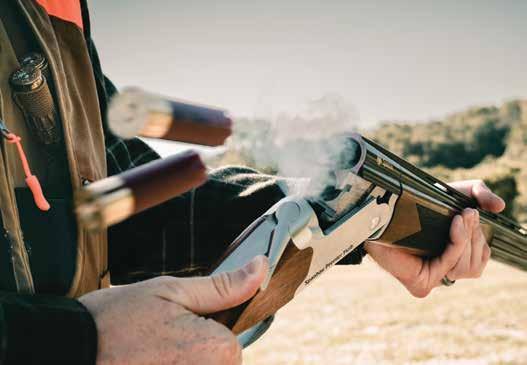



WHATEVER YOUR ADVENTURE IS, WE'VE GOT YOU COVERED.






Despite opposition from hunters and outfitters, Texas has become the first state to eliminate the Conservation Order, a special management directive since 1999 designed to increase the harvest of light
Public comments on the proposal were approximately 75 percent against, but the proposal was unanimously approved by the Texas Migratory Bird Committee.
Owen Fitzsimmons, the Webless Migratory Bird Program leader for Texas Parks and Wildlife Department, told the Texas Parks and Wildlife Commission that light geese numbers and hunter participation in the Conservation Order has dropped significantly.
“Hunter participation declined from 27,000 to 1,000,” he said.
Light goose researchers have concluded
While at her family’s ranch near Rocksprings in Edwards County for a turkey hunting trip, Kristan Battistoni harvested her first big game animal, an aoudad ram, with her 8-yearold daughter by her side. Her harvest turned out to be the highlight of the trip, as the turkeys remained silent throughout the weekend.
Battistoni decided to go sit in a blind after she saw a bunch of game camera photos of aoudad at a particular stand.
“While sitting in the blind that evening with my daughter, we noticed some movement and began to start seeing some aoudad cross out in front of us,” she said. “I saw two different aoudad that I thought I might shoot but was never able to get a good shot.”
Thinking she missed her chance, her mind began to think about how her husband was going to be asking why she wasn’t able to get a shot off before they slipped into the brush. Then, all of a sudden, Battistoni’s daughter tapped her to let her know that three rams were walking into view from the right side of the blind.
“She could see them before I could because of where she was sitting in
the blind,” Battistoni said. “There was a riverbed just out in front of the stand and I didn’t see them until they started to make their way down into it.”
Battistoni quickly got her .270 rifle into position and took a shot at the aoudad positioned in the middle of the three animals.
“The ram was quartering to me, and it immediately ran down into the riverbed after I shot,” she said. “My daughter and I were pretty sure we heard the aoudad crash and go down.”
Before she could process what had just happened, Battistoni got a text from her husband, who had heard her shoot from across the ranch, saying, “Atta’ girl!”
“My husband came and met us at the stand and went down into the riverbed to take a look while we waited in the blind,” Battistoni said. “A few moments later he motioned for us to walk down toward him, and there was my aoudad laying about 20 yards down in the riverbed from where he was standing when I shot him.”
Battistoni said she was pumped up, and so was her daughter who got to share the experience with her.
“It was a pretty special moment for me,” she said.
the Conservation Order has been ineffective, since light geese numbers dropped due to other factors, namely poor reproduction not as a result of habitat loss, and the geese have adapted to the destruction of summer habitat in the northern tundra and moved to other areas, which was largely the original reason for the Conservation Order.
Other changes will reduce the daily bag limit on light geese from 10 to 5 and extend the regular season by 19 days in the Eastern Zone.
Fitzsimmons said most hunting during the Conservation Order occurs during the first part of February, and the hunting times wouldn’t be impacted greatly.
Greater white-fronted geese
The Commission also approved an increase in the limit for greater white-fronted geese in the Western Zone, with the two-bird limit restriction being removed, and the specklebellies falling within the
limit of 5 for dark geese.
Of 264 responses, 60 percent disagreed with the proposal. Several outfitters from the Haskell, Knox City and other northwest Texas areas commented at the meeting, concerned about pressure on the birds and increased harvest due to the birds’ tendency to readily come into a decoy spread.
“Specklebellies are sensitive to pressure,” said hunter Cole Edwards. “There has been an increased number of hunters and fewer Canada geese in our area. This will be detrimental to freelancers and well-established outfitters – the geese eventually will be gone from our area.”
Justin Hill, of Ranger Creek Goose, said the specklebellies move more laterally than expected.
“Our counties cannot sustain a 150-percent increase in harvest,” he said. “Any changes should be incremental – raise it by one and see what happens.”
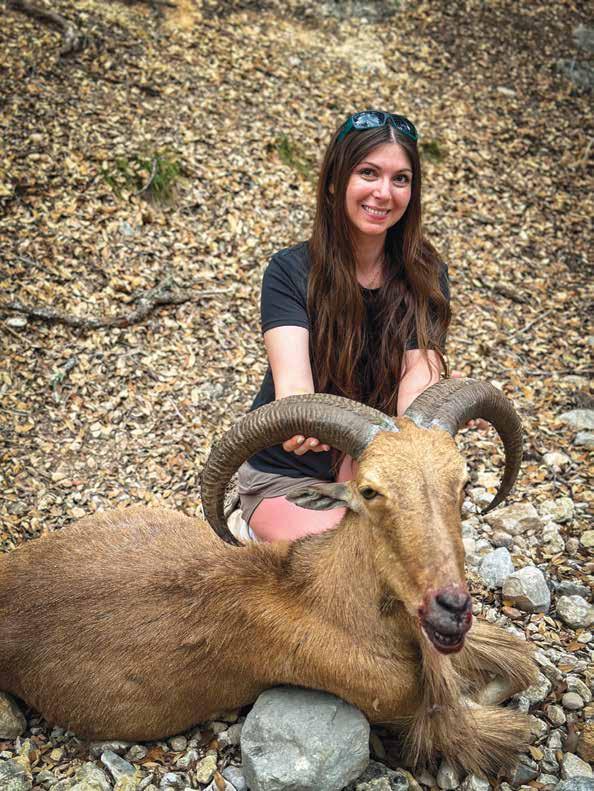
Hunters and biologists know feral hogs are a nest predator for ground-nesting birds, and of special interest to hunters is predation on quail and turkey nests. In addition to predation, new research conducted by Auburn University shows that turkeys avoid areas of greater feral hog abundance.
In a paper presented at the Vertebrate Pest Conference, researchers described how they
put radio devices on individual turkeys and pigs and monitored movements of the turkeys to determine if the presence of hogs affected how turkeys used the landscape. Hogs were removed from certain tracts of land, and not from others. Researchers observed the turkeys not only avoided the pigs directly, but when they had to move through the areas where hogs were present, they moved at a faster rate and avoided spending any unnecessary time.
For the landowner or lease, the manage-
ment implications are important. Typically, turkey renesting is relied upon to address nest depredation, although some other research indicates nest depredation is occurring at unsustainable rates. However, the avoidance behavior uncovered in this research affects hunting opportunities.
Turkeys are reluctant to go into areas with a lot of feral hogs, like the creek bottoms that make good habitat for both species, and spring gobblers are less likely to charge into a call if there are feral hogs in the area.
For small land holdings, the presence of hogs may preclude turkey usage and the spring season may be impacted.
Feral hog control in spring not only benefits nest success, but can have a positive benefit on the behavior of turkeys. Trapping hogs year-round will reduce their numbers and hunting (especially night hunting) them before spring turkey season will have them redistributed on the landscape, likely making for better hunting.
At its March 27 meeting, the Texas Parks and Wildlife Commissioners were briefed on two rules which would affect mountain lion management in Texas.
The rule has two components, the first of which was without controversy. That part would outlaw the practice of releasing a mountain lion for a hound hunt, defined as a “canned hunt.”
The possession of a live mountain lion is already illegal under the 2022 federal Big Cat Public Safety Act, but game wardens would be able to investigate alleged cases should the practice be declared illegal under state regulations.
The second part of the proposal would create an offense for a trapper or landowner to allow a live mountain lion to remain in a trap for more than 36 hours. Mountain lions are frequently trapped in livestock or bighorn sheep protection projects and, because they are nongame animals, not subject to the current 36-hour trap check requirement for furbearers.

There would be no violation of the rule if the snare includes a breakaway device that disassembles with 285 pounds of force.
Lone Star outdoor newS
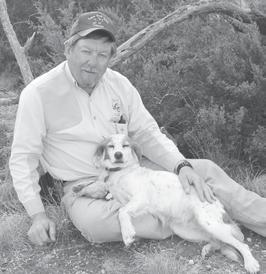
“Trappers are as concerned as anyone regarding the humane use of traps for wildlife management,” said Mike Bodenchuk, President of the Texas Trappers and Fur Hunters Association. “We support the humane use of traps and snares. The current proposal, however, may need to be tweaked to protect a trapper responsibly using coyote capture equipment from becoming a poacher because of the accidental capture of a mountain lion. Mountain lions often disperse widely and may show up anywhere in Texas. We need the rule to be flexible enough to protect both lions and trappers.”
“A breakaway device is essentially a weak link in a snare with a 4 1/2-foot cable,” Richard Heilbrun, director of TPWD’s Wildlife Diversity Program, told the Commission. “In a typical snare setup, coyotes would generate an average of 192 pounds of force, maxing out at about 250 pounds. We know that bears can generate more than 300 pounds of force, and we know that a mountain lion can drag a 200-pound buck of dead weight. So, there’s evidence they may be able to disassemble a snare with a breakaway device.”
Heilbrun estimates each breakaway device costs about 20 cents and takes a few minutes to add to a snare.
Dr. Dale Rollins was recognized for his contributions to quail research, education and hunting at the annual Park Cities Quail Coalition banquet on March 7. Rollins was named the inaugural inductee into the newly formed Dale Rollins Quail Hunting Hall of Fame. “No one has contributed more to the preservation of quail, education, and quail hunting in the state of Texas than Dr. Dale Rollins,” said Joe Crafton, president of the Rolling Plains Quail Research Foundation. “He has introduced countless youth and adults to the sport of quail hunting and shared his knowledge of all things related to quail to thousands of people. This induction serves to honor Dale’s contributions to quail hunting, and to identify and acknowledge the next generation of quail hunting ambassadors whose contributions to quail and quail hunting have gone above and beyond to the service of the sport.”
The Quail Hunting Hall of Fame will recognize individuals who have made significant contributions to quail hunting through their leadership, sportsmanship, conservation efforts and promotion of ethical hunting practices.
Nominees for the Quail Hunting Hall of Fame may include hunters, conservationists, educators, mentors and community leaders who have demonstrated exceptional dedication and service to the quail hunting community.
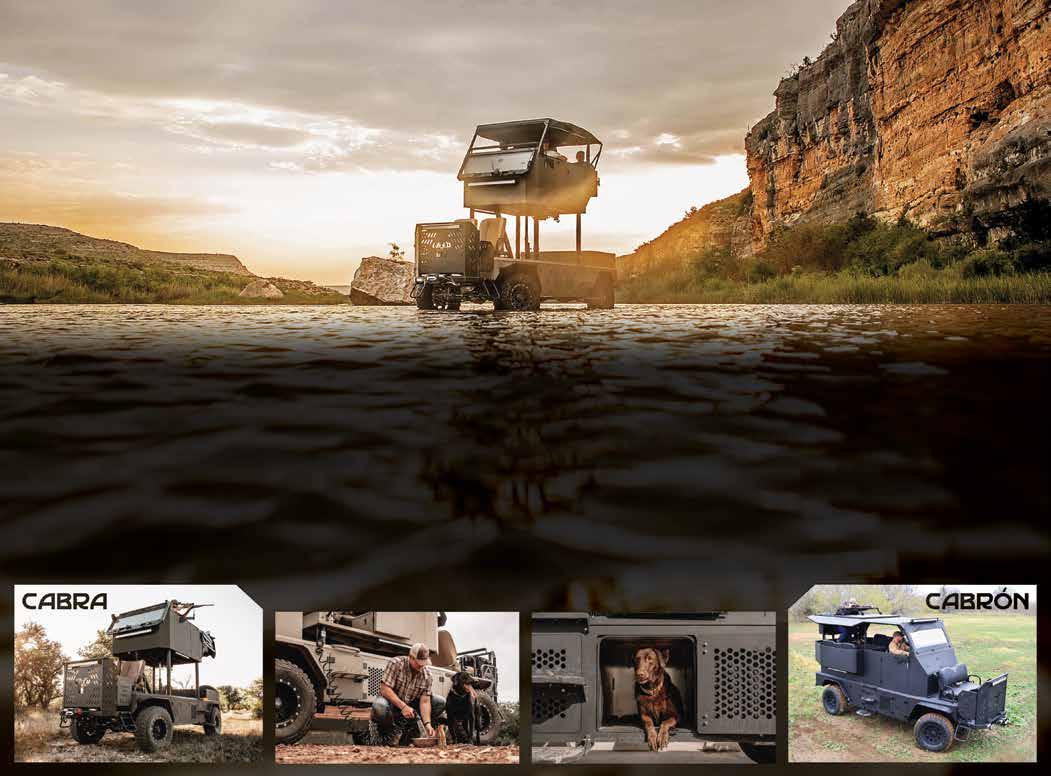
Schedule your test drive today! Made in Texas Purpose-Built, Hybrid-Electric Safari Vehicles.
Designed, engineered and built in Texas to the highest standards, Ultimate Top Drives creates bespoke safari vehicles that offer an unparalleled hunting and outdoors experience.
Boasting full-time 4WD high-torque electric drivetrains for silent operation, with available onboard generators for extended outings, every UTD vehicle ensures the quietest, stealthiest environment for hunting or viewing wildlife, or exploring the outdoors. Ruggedness, comfort and utility are all combined in The Cabra™, our flagship hunting focused top-drive with its patented articulating driver and passenger cab, and The Cabrón, our latest premium safari vehicle with expansive seating for up to 12 and available articulating rear seats.
ultimatetopdrives.com | 512-409-9950 | sales@ultimatetopdrives.com







Lone Star outdoor newS Hunter Lively, who guides hunters at Greystone Castle Sporting Club, was named the Orvis Endorsed Wingshooting Guide of the Year.
Lively joined Greystone in 2018, starting as a ranch hand and worked his way up to a fulltime guide. An avid outdoors man all his life, he is well-known for his energetic enthusiasm on every hunt.
“It was truly working up from the bottom,” Lively told Lone Star Outdoor News. Bird care, lawn care and even scooping out dog kennels. In 2019, at age 19, an opportunity to guide came and I never looked back.”
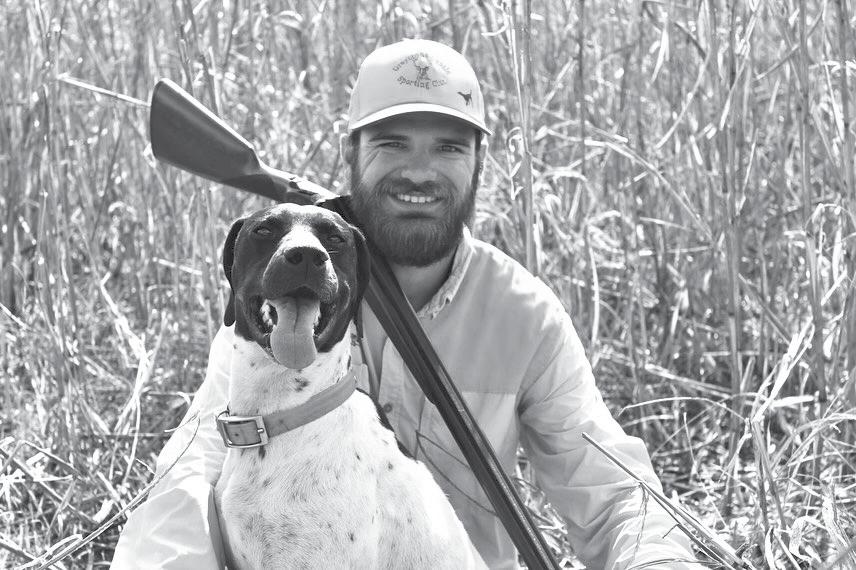
Lively has been a full-time guide at Greystone Castle since 2020. Greystone is a three-time Orvis Wingshooting Lodge of the Year (2011, 2015, 2022) and features large fields of sorghum, millet and switchgrass.










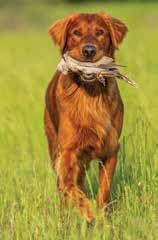
“To win this award is a dream come true,” Lively said. “Two years ago I flew to Manchester, Vermont to attend the 2022 Orvis Wingshooting Conclave. I learned more about the award and knew I wanted to win and be one of the best. I told Patrick Wall, the general manager, that in two years I would be Greystone’s first guide of the year. There was always a little part of me that said I would never be good enough to be seen by the great people of Orvis, but I knew if I just kept working and providing the best possible hunts for my clients it would pay off.”
Other Orvis-endorsed awards:
Fly-Fishing Guide of the Year – Dustin Coffey, a guide in the Southern Appalachian Mountains of North Carolina and East Tennessee.
Fly-Fishing Lodge of the Year – The White River Inn. The lodge in Cotter, Arkansas offers year-round fly-fishing for four species of trout in excursions from a 7,000-square-foot lodge above the White River.
Fly-Fishing Outfitter of the Year – Breckenridge Outfitters offers year-round guided fishing and a fly shop in Breckenridge, Colorado.
Wingshooting Lodge of the Year – Highland Hills Ranch. The Oregon facility offers hunts for pheasant, chukar, valley quail and Hungarian partridge, all in their native habitat.

Continued from page 1

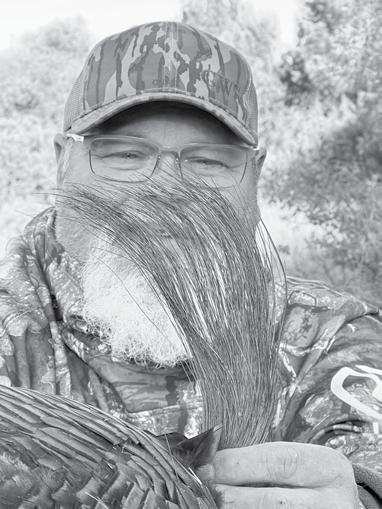
the truck.
The story was familiar to plenty of North Zone hunters. Two friends, though, one from southern Arkansas and the other from northern Louisiana, found mature birds following the jakes during the second weekend of the season.
Cole Faris, of Smackover, Arkansas, traveled to Stonewall County with his friend, Scott Davis, from nearby Junction City, Louisiana, after two negative hunting experiences in the South Zone.
The Saturday morning of April 6 began with birds gobbling in all directions.
“We went out after first light in two different parts of the ranch,” Faris said. “I saw movement and a red head coming. It turned out to be a pheasant (a survivor from a released bird hunt over Thanksgiving).”
Meanwhile, Davis had three jakes come into his decoys, followed by a tom. The jakes and tom started fighting and the tom moved off. A short time later, the tom must have made a loop and came in from another direction, and Davis made the 30-yard shot. “It strutted all the way in,” Davis said.
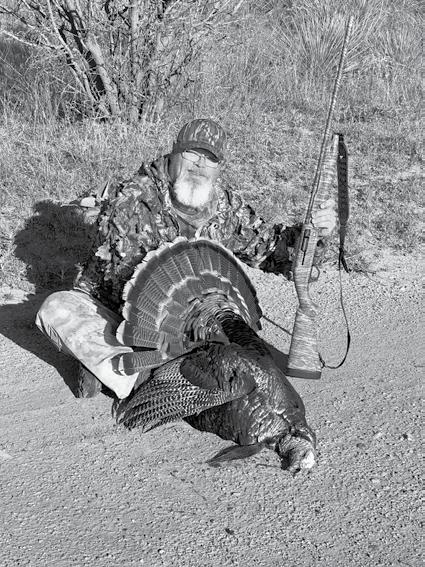
Around noon, the two friends hunted together and were on a berm near the highfence border of the ranch.
“We saw two turkeys across the fence,” Faris said. “They gobbled like crazy. Then two mature birds strutted in and gobbled and the jakes moved on. We kept calling, and finally the toms flew over the fence. We each shot one.”
On Sunday morning, Faris slept in to be ready for the 8-hour drive home, but Davis went on a short walk from the ranch headquarters and found a bird – watching him strut for 100 yards – and shot his third bird of the weekend.
“I was still asleep,” Faris said. “He came back to the house and said, ‘Wake up, it’s time to go home.’”
Faris said each of the toms were the heaviest he had seen, around 24 pounds, and all sported beards greater than 10 inches and spurs longer than 1 inch.
“It was awesome,” he said. “Jakes were everywhere, but we found some good toms.”
Continued from page 5
Changes to the trapping regulations also have the benefit of minimizing accidental bear captures in traps.
“In the last two decades, we’ve been notified of 17 bears in lion traps, and when we’re notified in the first few days of being caught, we were able to release 13 of them,” Heilbrun said.
The proposed rule will be published in the Texas Register and public comments will be sought. The item will return to the Commission agenda in its May 22-23 meeting.



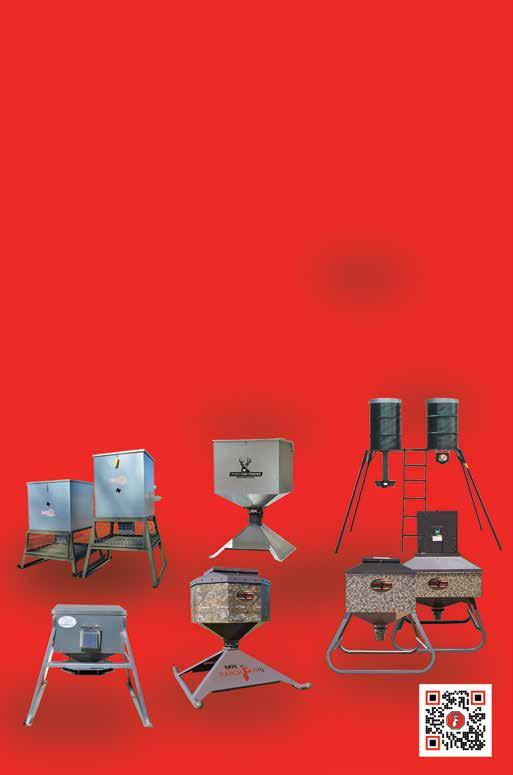
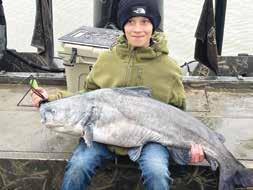 By Meghan Sharber
By Meghan Sharber
For Lone Star outdoor newS
March 22 will always be remembered by Asher Barnes.
The young angler caught a blue catfish that measured 42 inches long, with a 25-inch girth and weighing 31.69 pounds. While the previous record (28.65 pounds) was set in November of 2011, another impressive factor is Barnes is only 12 years old.
“I woke up that morning and thought — it’s so early,” Barnes said. “I really believed I was going on another normal fishing trip.”
Barnes and his grandfather, Ron Cogburn, scheduled their trip with Big Bite Guide Service on Lake Ray Roberts. Fishing guide Cole Thompson said he had been trying for two years to achieve the Jr. Angler Record.
“Anytime I have kids on my boat, my goal is to help them break the record,” Thompson said. “We have come close many times, and Asher got the job done.”
Cogburn appreciated the encouragement and guidance from Thompson.
“When the trip first began, Thompson told Asher his goal is to get him on a record-breaking catfish today,” Cogburn said. “Not even 45 minutes to an hour later, he is hooked to this monster catfish.”
Thompson’s fishing method is described by Cogburn as special as he has a strategic ability to put them on fish. The magical bait of the day was cut gizzard shad.
“He sets a 20-minute timer on his phone and if you do not catch a fish, we move to a new location,” Cogburn said. “We were on our second location, and he said they have caught large fish there before.”
At the first location, Barnes said he caught an average-sized catfish and then they changed spots.
“The record-breaking catfish hit the line and I immediately assumed it was not very big,” Barnes said. “It did not hit the line like a big catfish — then the rod completely bent over. When I saw how big its tail was, I was thinking what in the world is this thing.”
Cogburn was thrilled to witness his grandson’s accomplishment, but admitted this was not his first big fish. Barnes said he has been fishing since he was 3 years old.
“He caught a 47-pound mahi-mahi in Florida a couple of years ago, and then last summer he caught a 25-pound tarpon in Cancun,” Cogburn said. “He was truly a fisherman.”
Cogburn believes fishing is a skill that lasts a lifetime as he lives by the motto, more is caught than taught.
At its March 28 meeting, the Texas Parks and Wildlife Commission approved a tag system for harvesting oversized spotted seatrout, which will take effect
Sept. 1.
Several guides and organizations supported the tag system as opposed to the recent change which allowed the keeping of one fish, 30 inches or greater, as part of the daily bag limit.
The new tag will allow anglers to harvest one oversized spotted seatrout greater than 28 inches with the purchase of a saltwater fishing license or endorsement. The rule also implements a $3 Bonus Spotted Seatrout Tag
and a $3 Exempt Angler Tag (for individuals who, by law, are exempted from license requirements), allowing the retention of one additional oversized spotted seatrout per license year.
 By Tony Vindell For Lone Star outdoor newS
By Tony Vindell For Lone Star outdoor newS
A new spot for fishing enthusiasts to chill before heading out or coming back from the waters of the Lower Laguna Madre area held its official launching March 31.
Called Los Pescadores Coffee & Outfitters, the new business opened earlier this year at 411 Padre Boulevard on South Padre Island.
It’s a sort of headquarters for those who like fly-fishing more than conventional angling,
though it caters to both groups of anglers.
It has an in-house expert making flies and holds a fly-fishing workshop every Thursday.
And as its business name implies, Los Pescadores offers a variety of coffee, lattes and a lineup of spirits such as martinis and bourbon-fusion drinks.
Pastries from local bakeries and chefs are available, along with outdoor clothing and sunglasses.
The idea behind the shop was conceived by Daniel Keomoungkhoune, a 34-year-old

entrepreneur from the DallasFort Worth area.
“I wanted a place for anglers to hang out,” he said. “My father used to take us (three brothers) fishing, and we always enjoyed it.”
Keomoungkhoune came up with the idea of putting fishing and coffee/cocktail drinking together because — to him — both are a form of art.
The shop offers the aromatic drink from a number of coffeeproducing countries around the world.
Although Los Pescadores
Terry Alsup lives in Oklahoma but teamed up with a buddy, Spencer McAlester to win a bass tournament on Cedar Creek Lake in late March. The two anglers got it together and with the help of their electronics found a pile of rocks that held enough bass to propel them to victory and a $24,000 payday.
“We just got lucky and kind of found a rock pile off the end of a boat dock that held a fair number of bass,” Alsup said.
“There are lots of boat docks on this lake and that’s what most of the anglers in this one-day tournament were fishing.” Alsup and McAlester caught five bass that weighed 24.60. The heaviest was 6.81
pounds. All of those largemouth were caught on Senkos. Alsup said they didn’t really have a game plan other than fishing the boat docks. But thanks to their fish finder they saw a small pile of rocks and went over to fish them. They caught seven keeper bass off that one rock pile.
“It was in 8 to 12 feet of water,” Alsup said. “We just lucked into that spot.” They found plenty of fish around the boat docks but ended up with better bass off the rocks. The bass there were just beginning to move up shallow.
“The best bite was on a 5-inch green/ pumpkin Senko,” Alsup said. “We dipped the tails in a garlic/chartreuse dye. We fished them on a Texas rig and a 1/8-ounce sinker.”
Cedar Creek is known more as a crappie, Lone
opened its doors to cater to fishing enthusiasts, a surprising aspect has been the number of customers showing up who don’t fish.
“We have had a good response from the public,” the shop owner said. “The turnout was great at the grand opening.”
Business manager Alex Cardenas said Los Pescadores opened with the idea to provide a foundation for people who love fishing and who want to have fun.
“They can go in here, buy fishing supplies and grab a coffee or a cocktail,” he said. “Then
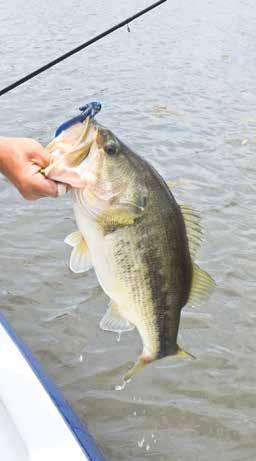
Tournaments for kayak anglers have seen a dramatic increase in recent years, and several events and series held March tourneys. At each, anglers measure their best five fish using the catch-photo-release (CPR) system, and also have a shot to win the big bass.
The Red River Kayak Bass League is in its third season hosting bass tournaments. They host five events each year and one classic.
On March 16 at Lake Amon G. Carter, 24 anglers participated, although heavy rains and thunderstorms caused the tournament to be paused for an hour before noon for safety reasons. Despite the conditions, Jose Rodriguez put together five fish for a total of 82 inches to win the tournament.
Rodriguez stayed in shallow water the entire day.
“I tried everything in the book,” he said before homing in on a pattern. He switched
to a finesse crankbait and slowed it down. That put him in fifth place around noon.
“After the storm, on my first cast I hooked into a big one,” Rodriguez said.
While the 22.75-inch fish secured him first place, it was just shy of the big bass prize, a 23-inch largemouth caught by K.C. Kemp.
Kemp’s long run first thing before the storm delay paid off, and he caught it fishing shallow and slow with a shaky head.
“I pulled it over a big female, and she latched on,” he said.
John Hutson placed second in the event with 77 inches, followed by Mark Obana with 74.75 inches.
The Texas Kayak Bass League held its fourth event of 2024 on March 23 at Belton Lake, where 92 anglers participated, landing 446 fish. Steven Fisher took the title with 86.25 inches.
“During practice, I found a good pattern with a lipless crankbait,” Fisher said.
During the one-day event though, the bite died after he landed two bass. Fisher
Please
While the daily limit of speckled trout went down from five to three and catching keepers has been difficult, fishing for other species has been good in the Rio Grande Valley.
There seems to be plenty of sheepshead, even though March was the optimal month for the fish found along jetties, pilings and deck structures.
From Port Isabel/South Padre Island to Port Mansfield and Baffin Bay, anglers have been catching other species, including red and black drum and whiting.
During the third week of March, anglers caught their limits of five sheepshead a day, while others loaded up on whiting in bay waters and along the Brownsville Ship Channel from the Turning Basin all the way to the tips of the north and south jetties.

In the Port Mansfield area, more redfish have been caught. John Ruiz, a veteran fishing guide who operates out of the Port Isabel Fishing Pier, has been targeting the sheepshead first and then going after several schools of black drum spotted in the Laguna Madre area.
For Lone Star outdoor newS
There was a light east wind the day after a cool front moved across the lower Laguna Madre. Colton Knipling was wade-fishing with his dad and brother-inlaw when things kind of got crazy. Knipling was in thigh-deep water and fishing a sand pocket with a new lure called a Dart. He got a bump, set the hook and reeled in his personnel best speckled trout weighing 9.5 pounds.
“We took a few photos and let her go,” Knipling said. “I made a cast to the same spot and hooked up again. This trout weighed 8.6 pounds. I couldn’t believe it, but things just kept getting better and better. The three of us ended up catching a few more in the 7-to 7.5-pound class. It was definitely a great day to be on the water.
Knipling’s group was using newer coffee-scented soft plastic




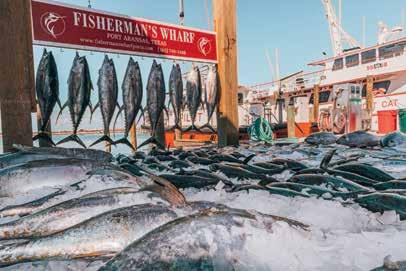

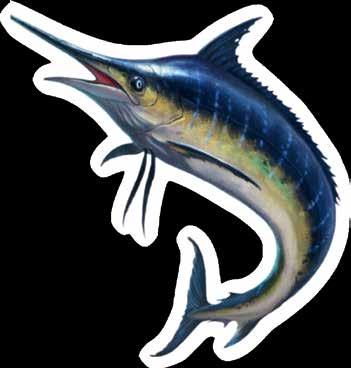

ALAN HENRY: Water clear; 57 degrees; 4.53’ low. Crappie are good on minnows.
AMISTAD: Water lightly stained; 67 degrees; 66.09’ low. Largemouth bass are fair on crankbaits, underspins, Texas-rigged lizards and jerkbaits. White bass are good on lipless crankbaits and blades. Stripers are slow.
ARLINGTON: Water stained; 67 degrees; 0.05’ high. Largemouth bass are good on soft plastics and moving baits. Catfish are fair on cut bait.
ARROWHEAD: Water lightly stained; 62 degrees; 8.30’ low. Crappie are good on black and chartreuse jigs. Catfish are good on fresh cut gizzard shad.
ATHENS: Water stained; 73 degrees; 0.58’ high. Largemouth bass are good on Carolina rigs, crankbaits and jerkbaits. Crappie are fair on jigs and minnows.
AUSTIN: Water lightly stained; 68 degrees; 0.63’ low. Largemouth bass are good on shaky-head Senkos, swimbaits, spinner baits and wacky worms.
B A STEINHAGEN: Water stained; 66 degrees; 0.37’ low. Largemouth bass are fair on soft plastics. Catfish are good on cut bait and prepared baits.
BASTROP: Water stained; 70 degrees. Largemouth bass are good on flukes, spinner baits and worms.
BELTON: Water lightly stained; 64 degrees; 11.48’ low. White bass are good on slabs. Catfish are good on fresh shad.
BENBROOK: Water stained; 64 degrees; 1.37’ high. Largemouth bass are good on Texas rigs, jigs, spinner baits and wacky rigs. Crappie are good on minnows and jigs. Catfish are slow.
BOB SANDLIN: Water stained; 63 degrees; 0.30’ high. Largemouth bass are on fair on lizards, top-waters and chatter baits. Crappie are fair on minnows and jigs. White bass are good on slabs and minnows. Catfish are good on cheese bait.
BRAUING: Water stained, 68 degrees. Red drum are fair on cut bait. Catfish are fair on cheese bait, liver and frozen shrimp.
BROWNWOOD: Water stained; 64 degrees; 8.71’ low. Largemouth bass are good on jerkbaits, chatter baits and crankbaits. Crappie are good on jigs and minnows. White bass are good on crankbaits and small swimbaits. Catfish are good on cut or prepared bait.
BUCHANAN: Water lightly stained; 60 degrees; 24.95’ low. Largemouth bass are good on craws, worms, spinner baits and jigs. Stripers are fair on live bait and jigging
spoons. White bass are good on jigging spoons, live bait and crankbaits. Crappie are good on chartreuse jigs.
CADDO: Water stained; 61 degrees; 1.68’ high. Largemouth bass are good on flukes, spinner baits and swimbaits.
CALAVERAS: Water lightly stained; 65 degrees. Red drum are fair on frozen shrimp, cut bait and crawfishscented baits. Catfish are fair on cheese bait, frozen shrimp and liver.
CANYON: Water stained; 64 degrees; 21.73’ low. Largemouth bass are good on spinner baits, drop shots and shaky heads.
CEDAR CREEK: Water lightly stained; 63 degrees; 0.02’ high. Hybrid striped bass and white bass are good on slabs and spinner baits. Crappie are good on minnows and jigs.
CHOKE CANYON: Water stained; 70 degrees; 28.43’ low. Largemouth bass are good on soft plastic worms, flukes and chatter baits. Crappie are good on jigs, grubs and live minnows. White bass are fair on jigs and bladed baits. Catfish are good on live bait, cut bait and stink bait.
CONROE: Water stained; 68 degrees; 0.03’ high. Largemouth bass are good on soft plastics and moving baits. Hybrids are slow. Crappie are fair on minnows and jigs. Catfish are good on cut bait.
COOPER: Water stained; 60 degrees: 1.00’ low. Catfish are good on cut shad.
CORPUS CHRISTI: Water stained; 67 degrees; 8.61’ low. Crappie are fair on jigs and live minnows. Alligator gar are good on cut carp. Catfish are good on worms, punch bait and cut carp.
EAGLE MOUNTAIN: Water stained; 60 degrees; 4.36’ low. White bass are fair on slabs, rooster tails and inline spinners. Crappie are fair on jigs. Catfish are good on punch bait and shad.
FALCON: Water stained; 70 degrees; 33.02’ low. Largemouth bass are good on soft plastics, chatter baits and spinner baits. Crappie are fair on minnows with a slip cork. Catfish are good on cut bait.
are fair on jigs, small spinners and minnows. Catfish are good on cut bait, minnows and prepared bait.
FT PHANTOM HILL: Water stained; 63 degrees; 6.80’ low. Largemouth bass are good on worms, spinner baits and crankbaits. Crappie are fair on minnows and jigs. Hybrids are good on umbrella rigs. Catfish are fair on cut bait and live bait.
GRANBURY: Water clear; 67 degrees; full pool. Largemouth bass are good on soft plastics and spinner baits. Striped bass are fair on live bait. Crappie are fair on minnows. White bass are good on slabs and spinner baits. Catfish are good on cut shad.
GRANGER: Water lightly stained; 60 degrees; 0.76’ high. Largemouth bass are good on spinner baits. Crappie are good on minnows and jigs. White bass are fair on jigs. Catfish are good on live bait.
GRAPEVINE: Water clear; 62 degrees; 1.52’ high. Largemouth bass are good on soft plastics and crankbaits. White bass are good on shad imitations and rattle traps. Crappie are fair on minnows. Catfish are good on punch bait and cut bait.
HOUSTON COUNTY: Water clear; 67 degrees; 0.21’ high. Largemouth bass are good on wacky worms, weightless Texas rigs and swim jigs. Crappie are fair on minnows.
HUBBARD CREEK: Water stained; 64 degrees; 12.03’ low. Largemouth bass are good on crankbaits, shaky heads, spinner baits and Carolina rigs. Crappie are fair on minnows or jigs. Catfish are fair on cut bait.
JOE POOL: Water stained; 65 degrees; 0.75’ high. Largemouth bass are good on soft plastics and moving baits. Crappie are good on minnows.
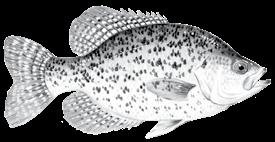
LAKE O’ THE PINES: Water stained; 63 degrees; 2.16’ high. Largemouth bass are fair on lizards, top-waters and chatter baits. Crappie are good on minnows and jigs. White bass are fair on jigs and bladed baits. Catfish are good on cut bait.
swimbaits. Crappie are fair on jigs.
LEWISVILLE: Water lightly stained; 62 degrees; 0.02’ high. Largemouth bass are fair on spinner baits, crankbaits and soft plastics. White bass and hybrid are fair on slabs, jigs and live bait. Catfish are good on cut shad.
LIMESTONE: Water stained; 67 degrees; 0.08’ high. Largemouth bass are good on swim jigs, Texas rigs and chatter baits. Crappie are good on minnows. White bass are fair on jigs and slabs. Catfish are fair on cut bait.
LIVINGSTON: Water stained; 65 degrees; 0.96’ high. Largemouth bass are slow. Catfish are fair on shad.
MARTIN CREEK: Water stained; 72 degrees; 0.03’ low. Largemouth bass are fair on gold jerkbaits and wackyrigged worms. Crappie are good on jigs. Catfish are fair on nightcrawlers.
MEREDITH: Water stained; 55 degrees; 45.40’ low. Largemouth bass are fair on minnows and artificials. Crappie are fair on jigs and minnows. White bass are good on minnows, slabs and any vertical presentations. Walleye are good on minnows, grubs and other artificials. Catfish are fair on crawlers, liver and frozen shad.
fair on soft plastics and crankbaits. Crappie are slow. Catfish are fair on cut bait.
PALESTINE: Water stained; 68 degrees; 0.65’ high. Largemouth bass are good on Texas-rigged craws and creatures. Crappie are fair on minnows and jigs. Hybrid stripers are good on swimbaits. Catfish are good on live minnows and cut bait.
POSSUM KINGDOM: Water clear; 65 degrees; 0.14’ low. Striped bass are fair on live bait. White bass are fair on live shad, small slabs and jigs. Catfish are good on cut shad.
PROCTOR: Water stained; 65 degrees; 12.05’ low. Largemouth bass are fair on soft plastics. Catfish are good on cut bait.
RAVEN: Water lightly stained; 69 degrees. Largemouth bass are good on top-water frogs, crankbaits, jerkbaits, and weedless worm rigs. Crappie are good on jigs and minnows. Catfish are good on stink bait and worms.

RAY HUBBARD: Water stained; 63 degrees; 0.04’ low. White bass are good on slab/ jig combinations. Crappie are fair on jigs and minnows. Catfish are fair on cut shad.
and slabs. Crappie are slow. Catfish are good on fresh cut shad and punch bait.
TEXANA: Water stained; 68 degrees; 0.13’ low. Catfish are good on cut bait.
TEXOMA: Water stained; 57 degrees; 1.84’ low. Largemouth bass are fair on jerkbaits and soft plastics. Striped bass are good on live shad. Crappie are fair on jigs and minnows. Catfish are fair on cut bait and gizzard shad.
TOLEDO BEND: Water lightly stained; 65 degrees; 2.07’ low. Largemouth bass are fair on wacky worms and Texas-rigged lizards.
TRAVIS: Water stained; 62 degrees; 50.06’ low. Largemouth bass are good on stick baits, craw worms and swimbaits.
TWIN BUTTES: Water stained; 68 degrees; 32.97’ low. Crappie are slow. White bass are fair on spoons, crankbaits and spinner baits. Catfish are fair on nightcrawlers, fresh shad and cheese bait.
FAYETTE: Water stained; 68 degrees. Largemouth bass are fair on crankbaits, worms, shaky heads and drop shots.
FORK: Water stained; 60 degrees; 0.19’ low. Largemouth bass are good on top-water frogs, flukes and soft plastic worms. Crappie
LAVON: Water lightly stained; 55 degrees; 0.60’ high. Largemouth bass are good on Texas-rigged worms and creatures. Crappie are fair on jigs and minnows. White bass are fair on spinner baits and jigs. Catfish are good on cut bait.
LBJ: Water stained; 62 degrees; 0.26’ low. Largemouth bass are fair on spinner baits, wake baits and underspin
NACOGDOCHES: Water stained; 65 degrees; 0.03’ high. Largemouth bass are good on crankbaits, Carolina rigs, chatter baits and senkos. Crappie are fair on beetle spins and rooster tails.
NACONICHE: Water lightly stained; 64 degrees; full pool. Largemouth bass are fair on Texas-rigged creatures. Crappie are good on minnows and jigs. Catfish are slow.
NASWORTHY: Water lightly stained; 67 degrees. 0.42’ low. Largemouth bass are good on chatter baits and soft plastics. Crappie are good on jigs. Catfish are fair on cut bait and stink bait.
NAVARROW MILLS: Water lightly stained; 66 degrees; 1.51’ high. Largemouth bass are fair on Carolina-rigged worms and lizards. White bass are fair on minnows and jigs. Crappie are good on jigs. Catfish are good on cut bait and punch bait.
O H IVIE: Water stained; 64 degrees; 31.38’ low. Largemouth bass are fair on creature baits and crankbaits. Crappie are good on jigs and minnows. Catfish are good on cut shad and live perch.
OAK CREEK: Water lightly stained; 60 degrees; 16.29’ low. Largemouth bass are
RAY ROBERTS: Water lightly stained; 55 degrees; 0.33’ low. White bass are good on slabs. Catfish are fair on cut bait.
RICHLAND CHAMBERS: Water stained; 62 degrees; 0.48’ high. White bass and hybrids are good on slabs. Crappie are fair on minnows.
SAM RAYBURN: Water stained; 68 degrees; 6.36’ low. Largemouth bass are fair on crankbaits. Crappie are slow. White bass are good on minnows, crankbaits and jigging spoons. Catfish are fair on shad.
SOMERVILLE: Water stained; 66 degrees; 0.43’ low. Largemouth bass are fair on spinner baits and crankbaits. Crappie are good on minnows. Hybrids are fair on cut bait and jigs. Catfish are good on shad or cut bait.
SPENCE: Water stained; 60 degrees. 47.81’ low. Largemouth bass are fair on deep-diving crankbaits. White bass are good on spoons and lipless crankbaits.
STILLHOUSE: Water stained; 64 degrees; 17.07’ low. Largemouth bass are fair on soft plastics. White bass are slow.
TAWAKONI: Water lightly stained; 60 degrees; 1.10’ high. Largemouth bass are good on crankbaits and worms. Hybrids and white bass are good on swimbaits
WACO: Water stained; 66 degrees; 0.01’ high. Largemouth bass are good on Texas rigs, small swimbaits and creature baits. White bass are slow. Crappie are fair on live minnows and jigs. Catfish are fair on live and cut bait.
WALTER E LONG: Water stained; 67 degrees. Largemouth bass are fair on soft plastic worms and flukes. Hybrid stripers are fair on moving baits.
WHITNEY: Water stained; 66 degrees; 0.35’ high. Largemouth bass are fair on soft plastics. Striped bass are good on live bait and jigs. White bass are good on jigs and spinners. Catfish are good on cut drum and shad.
WORTH: Water stained; 60 degrees; 2.99’ low. White bass are good on jigs and spinners. Crappie are good on small jigs. Catfish are fair on shad and punch bait.
WRIGHT PATMAN: Water stained; 64 degrees; 5.02’ high. Crappie are slow. Catfish are good on noodles.
—TPWD
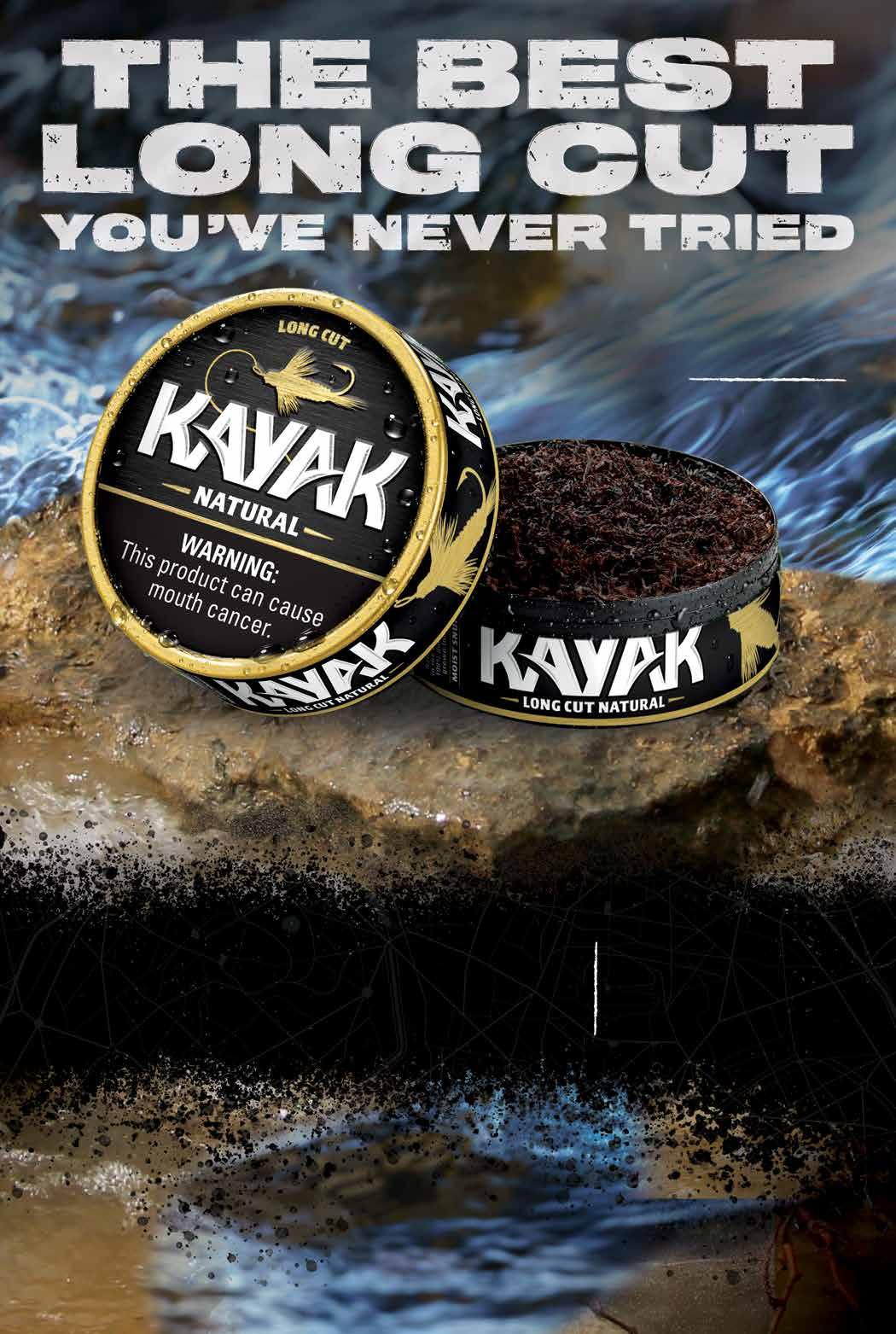
ROAD RAGE INCIDENT AVOIDED
Two state park officers were driving to Resaca de la Palma State Park for a sign installation when a truck passed their state vehicle near Kingsville, then immediately cut in front in an unsafe manner, braking hard to turn into a place of business. The state truck had to brake to avoid an accident. The driver of the truck appeared agitated and upset. The state truck entered a nearby gas station to refuel and was followed in by the other truck, which blocked traffic into the station. The driver claimed the passenger in the state truck made a rude hand gesture toward him, which was denied by the officers. The man maintained an aggressive position but then drove away after taking pictures.
While driving along park roads, a Ray Roberts Lake State Park vehicle with two officers observed a horse with a saddle but, no rider, trotting toward the vehicle. The truck was parked and the officers gained control of the horse, which was soaking wet and panicked. One officer walked the horse back down the road toward the trailhead, and the other officer located a woman coming out of the brush. The woman was covered in mud and had blood streaming down her face from a gash above her left eye. The woman explained she had been riding her horse off trail near the river so that he could get a drink. The horse sank into the mud which caused him to panic
Six people were rescued from their overturned vessel near Pavell Island after the Coast Guard received a report from an Orange County Sheriff’s Department dispatcher of a vessel taking on water with four adults and two children aboard. A response boat was launched and, at the scene, discovered the vessel had capsized. All six people were wearing life jackets and were standing on the boat in waist-deep water. The crew embarked the boaters and safely transferred them to emergency medical services personnel waiting on shore.
and throw her off. She thought she hit a tree branch on the way down, cutting her head.
Another rider arrived and offered to help the officer walk the horse back to the parking area, but the woman said she had ridden to the park from her home. An officer drove her home to get cleaned up, bandaged her wound and hooked up her horse trailer. Back at the park, two other officers, one experienced with horses, helped load the horse into the trailer. The woman promised she would go to a local clinic to have her head bandaged after she got her horse home.
DOG ATTACK AT PARK
A man and his wife were walking their dog at McKinney Falls State Park when a young girl
opened the door to a recreational vehicle. Once the door was open a pit bull dog ran out of the RV and attacked the couple’s dog. The wife picked up the dog and shielded him from the larger dog. The dog owners of the pit bull came out of the RV and took control of the dog. A citation was issued for a dog off leash, and the owners were told the dog could not stay at the park because of the attack. The owners were asked to vacate the campsite and leave the park.
The Galveston County Sheriff’s Office notified the Coast Guard of a 28-year-old man who had fallen on the North Jetty and injured his leg and back. Galveston County emergency medical services personnel

were able to assess the man’s condition but could not safely transport the man off the rocks. A response boat and crew, along with a helicopter crew, were launched. At the scene, the helicopter crew hoisted the injured man and transported him to the University of Texas Medical Branch in Galveston in stable condition.
MAN FOUND AFTER SUICIDE
A state park police officer was notified by Van Zandt County of a missing person reported out of the Wylie Police Department, and the man’s last known location was Purtis Creek State Park. They also informed the officer that the man had recently purchased a firearm, dealt with depression and had suicidal tendencies. Park officials noted a primitive camping reservation for the man, and that he had called earlier that morning to extend his stay one more night. A park ranger verified the vehicle was at the designated parking area for primitive camping. At the primitive camping loop with Henderson County deputies, the officers found the man deceased from an apparent self-inflicted gunshot wound. After an investigation, the death was ruled a suicide, and funeral home personnel arrived to pick up the body.

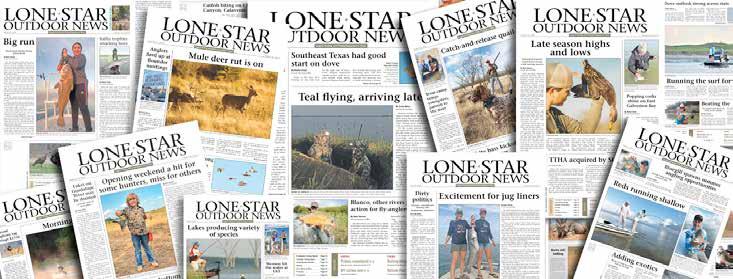


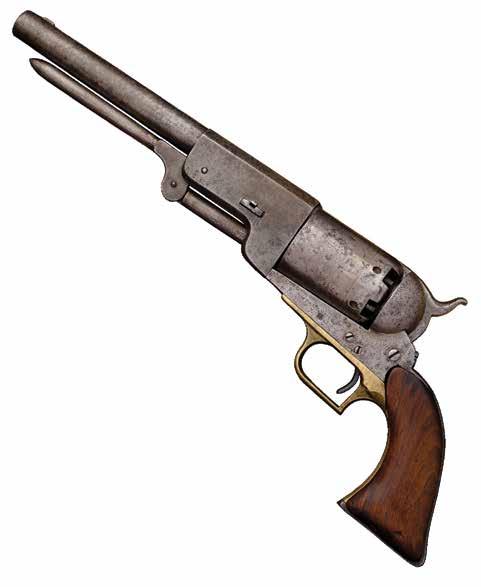

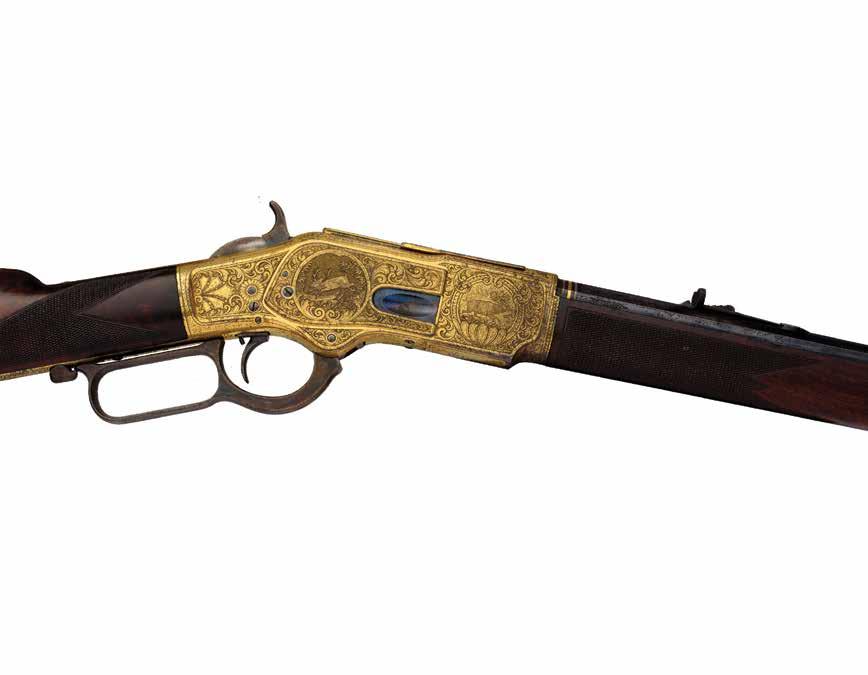






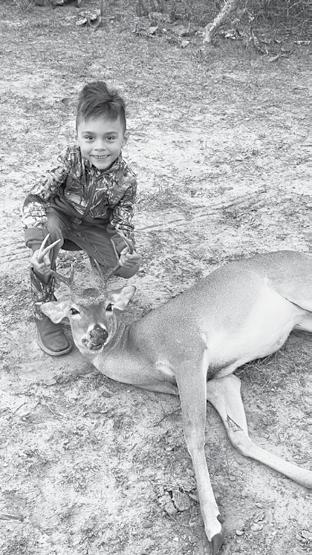



Continued from page 1
been holding good numbers of red snapper up to about 10 pounds or so, along with some large mangrove snapper and various grouper.
“The swordfish bite has been pretty steady from 65 to 90 miles out in 1,550 to 1,700 feet of water,” Buell said. “Wahoo have also been fairly consistent anywhere from 50 to 60 miles out in about 200 feet of water. The key has been targeting stretches of water where the water temperature is from 70 to 72 degrees.”
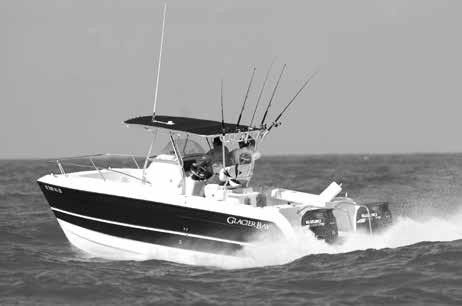
Making long drifts with strip baits and squid has been producing the most strikes from swords for Buell. His anglers have been landing swordfish up to about 160 pounds when they have been able to chase them.
Trolling various skirt baits and diving baits has been the ticket for catching wahoo. Zachary Still and Brandon Skinner recently went on a 30-hour offshore trip out of Galveston with Galveston Party Boats. They bottom fished over structure about 85 miles south of Galveston in 150-200 feet of water, and caught limits of vermilion, along with some trigger fish.
The duo also fished for tuna, along with the other anglers aboard the party boat, around the Perdido, Whale, and Hoover rigs anywhere from about 165-215 miles south of Galveston. They both caught good numbers of blackfin tuna in the 10-15-pound range. Neither of them landed a yellowfin tuna, although 22 yellowfin tuna were landed by other anglers. Most were in the 35-40-pound range, with the largest weighing about 70 pounds.
According to the staff at Port Aransas’ Fisherman’s Wharf, their most recent nine-hour offshore charter produced over 290 vermilion snapper, along with good numbers of blue runners, triggerfish and sharks about 40-55 miles out. Their most recent 56-hour trip included catches of yellowfin and blackfin tuna, along with various grouper, swordfish, wahoo, and mahi-mahi about 150-170 miles out.
Continued from page 8
on Thursdays, they can sharpen their skills or learn about fly-fishing.”
He said all the flies are made by Nicolas Crespo, a Monterrey-Mexico angler who has his own line of gadgets called La Pinche Mosca.
San Benito residents Omar and Aaron Gonzales stopped by on Saturday to check out the new business in town.
The avid anglers were impressed about what they saw and learned.
“I am not a fly-fisherman, but I will give it a try,” the older Gonzales said as Cardenas made a fly within a couple of minutes.







Continued from page 1
until I find another school on the graph to go after.”
Vertically jigging slabs has been produc ing the most hookups with white bass.
“There has been some bird activity, which has produced some decent action from hy brid stripers on swimbaits,” Laughlin said. “The bird action has only been taking place during the early morning hours. On days with southerly winds and cloud cover, fish ing the birds has been pretty good.”
Most of the hybrids his anglers have been catching have been from 18-22 inches, with plenty of smaller fish mixed in. The white bass have been averaging 12-14 inches.
On Richland Chambers Reservoir, Jason Weisberg of REEL Fishing Guide Service said the shad spawn is in full force and hybrid stripers are stacked up along banks, striking a variety of lures during the first hour or so of daylight. After the initial morning activ ity, he and his anglers have been moving out to deeper water to catch hybrids and white bass.
“There are a lot of hybrids schooling in 20 to 30 feet of water off of main lake points,” Weisberg said. “You have to use a vertical presentation to catch these fish in deeper water. Live shad or small flukes have been working the best.”
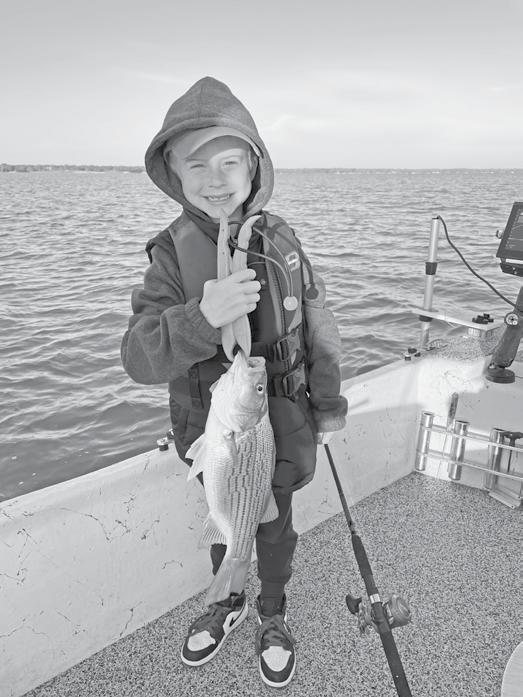
Weisberg has been catching hybrids up to about 25 inches in length.
“You can catch some white bass mixed in with the hybrids, especially if you are using live bait,” he said. “The biggest concentrations of white bass are staging in a little shallower water. Most of the sandies are in the 12- to 14-inch range with plenty of smaller ones in the mix.”












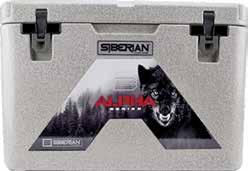


On Lake Texoma, guide Shawn Summit, of Sparky’s Guide Service, said limits of stripers have been fairly easy for his anglers to catch while using live shad in 37-40 feet of water. Fish of all sizes have been caught, with the largest weighing in at about 10 pounds.
“The fish are concentrated about 30 feet below the surface,” Summit said. “This pattern has been holding steady day in and day out. Anchoring up and dropping down live bait has been the ticket.”
Summit said weather conditions have not really affected the action at all and, in his opinion, the striper bite has actually seemed to get a little better on days following significant whether changes.






Kryptek Outdoor Group named Eden Palm its director of international sales.
O’Connor promoted at Nosler Nosler, Inc. promoted Tim O’Connor to law enforcement sales and product development manager.
Kelly Reisdorf was named new interim chief executive officer of USA Shooting following the resignation of Craig Kozeniesky.
Biologist position open
The Gulf of Mexico Fishery Management Council is currently accepting applications for a fishery biologist position.
Rod company acquisition
GSM Outdoors acquired Arkansas-based Mid-America Rod Company.
Alex Heiser was named the director of marketing and communications for the Archery Trade Association.
Sales leader at BKK Hooks
Michael “Sully” Sullivan, formerly at 13 Fishing, joined BKK Hooks as president of sales.
Firearm
WATCHTOWER Firearms named Graham Kohlmeyer as its new chief operating officer.
Account manager positions
Signature Products Group is in search of regional account managers to support specific territories across several states.
Gordon Sprouse was named as director of marketing for the Americas for Raymarine and FLIR Maritime.
1 package (10 ozs.) frozen spinach, thawed
1⁄4 teaspoon each salt and pepper
1 pound catfish fillets
1 tsp. Cajun seasoning blend
1 large tomato, diceda
4 green onions, sliced


Preheat oven to 350 degrees. Spray a 9x13 baking dish with nonstick cooking spray. Squeeze thawed spinach to remove most of the liquid. Spread in the bottom of the pan. Sprinkle with salt and pepper. Arrange fish fillets over spinach. Sprinkle with seasoning blend. Top fish with tomatoes and green onions. Cover the baking dish with foil and bake for 15 minutes. Remove foil and bake for 20 minutes more or until fish flakes easily.
—Mississippi State Extension Service
1 wild turkey
1 baking bag from supermarket
2 stalks celery, cut into 2-inch pieces
1 yellow onion, sliced Flour
1/2 cup butter, cut into 1/2-inch pieces
Cajun or poultry seasoning
1/2 cup apple cider
2 tbsps. maple syrup
Salt and pepper
Preheat oven to 350 degrees. Place oven bag in a 2-inch deep roasting pan. Spray the inside of the bag with cooking spray to prevent sticking. Add flour to bag and shake to coat. Place vegetables in the bag. Rinse turkey and pat dry with paper towels. Combine softened butter with Cajun seasoning and rub on turkey. Season with salt and pepper. Place the turkey, breast side up, in the prepared oven bag, which is sitting in the roasting pan. Whisk apple cider and maple syrup together and pour over the turkey. Seal the oven bag with the enclosed nylon tie. Cut 5-6 slits about 1/2-inch long in the top of the turkey bag to vent. Roast turkey 2-4 hours, until an instant-read thermometer inserted in the thickest part of the turkey measures 165 degrees. Remove turkey from oven and let the turkey rest before carving.
—Missouri Dept. of Conservation
SABINE LAKE: 62 degrees. Slot redfish and black drum are fair in the Intracoastal Canal on live shrimp under a popping cork. Speckled trout are good on live shrimp under a popping cork or soft plastics at the north levee wall. Black drum are fair on live shrimp.
BOLIVAR: 70 degrees. Sand trout, small speckled trout, redfish and occasional flounder are fair at the jetties on live shrimp under a popping cork and mullet. Redfish and black drum are fair on shrimp and cut bait in the surf from Rollover Pass to Bolivar Flats.

TRINITY BAY: 72 degrees. Speckled trout are good along the east shoreline near hard structure on soft and hard plastic baits. Black drum and redfish are good on live shrimp under a popping cork. Flounder are fair on scented soft plastics and shrimp imitations.
EAST GALVESTON BAY: 70 degrees. Black drum, redfish and speckled trout are fair along the shorelines, near drains and bayous, on live shrimp. Redfish are good on soft plastics under birds. Speckled trout are fair over oyster reefs on live shrimp and soft plastics.
WEST GALVESTON BAY: 70 degrees. Speckled trout and black drum are fair over shell reefs with live shrimp or soft plastics. Redfish are good on shrimp near grass lines.
TEXAS CITY: 71 degrees. Oversized black drum are fair on cracked crab. Redfish and black drum are fair on a popping cork and shrimp and soft plastics.
FREEPORT: 70 degrees. Redfish are good in the bays on shrimp under a popping cork. Trout are good on paddle tails and shrimp with a popping cork. Flounder are fair at the pass and bays on live shrimp on the bottom.
EAST MATAGORDA BAY: 68 degrees. Speckled trout, redfish and black drum are fair on live shrimp or shrimp imitations while drifting.
WEST MATAGORDA BAY: 68 degrees. Black drum, redfish and speckled trout are fair on live shrimp. Redfish and black drum are fair cut mullet.
PORT O’CONNOR: 60 degrees. Bull redfish and jack crevalle are good on cut bait. Sheepshead are good at the jetties on live or dead shrimp.
SAN ANTONIO BAY: 65 degrees. Redfish are fair along the shorelines and shell reefs with cut bait or wading with artificials. Speckled trout are slow. Bull redfish are good at the jetties on cut bait.
ROCKPORT: 68 degrees. Redfish are good on the flats on shrimp, cut mullet and sea lice. Trout are fair on popping corks with live shrimp or soft plastics.
REDFISH BAY: 68 degrees. Redfish are fair along the shorelines and sand bars near Ransom Island and Dagger Island on dead shrimp and cut mullet. Drum are fair in the middle of flats on dead shrimp. Speckled trout are fair on live shrimp under a popping cork.
PORT ARANSAS: 68 degrees. Speckled trout are fair on free-lined shrimp and popping corks. Redfish are good on cut mullet and blue crab.
CORPUS CHRISTI: 68 degrees. Black drum are good on dead shrimp. Redfish are fair near Shamrock Island on sea lice. Speckled trout are fair on the flats with live shrimp under a popping cork.
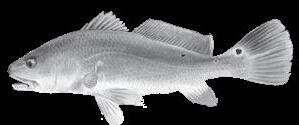
BAFFIN BAY: 73 degrees. Black drum and redfish are good on live bait. Speckled trout are fair on Corky Soft-Dines in dark and purplish colors.
PORT MANSFIELD: 71 degrees. Redfish and speckled trout are good on a popping cork with plastics over scattered grass in about 2 feet of water. Flounder are fair on jigs and scented soft plastics.
SOUTH PADRE: 67 degrees. Speckled trout are good in deeper water and drop-offs on live shrimp and artificials. Mangrove Snapper are good at the end of the Brownsville Channel on shrimp.

Continued from page 8
catfish and white bass/hybrid fishery.
“The hybrids are all over the lake,” said Richard Cerrato, who lives not too far from Cedar Creek. “Right about now is a good time to troll jigs for hybrids. What I like to do is take a diving Bomber and tie about a 2-foot length of monofilament leader to the back of the lure and add a tube jig. We just troll until we find a good bite.”
Checking for birds is another tactic.
“If they are on the surface, we tie on a top-water lure or some sort of soft plastic jig on a 1/4-ounce jig head,” Cerrato said. “White slab spoons are good too over humps and drops.”
Cerrato said Cedar Creek Lake is underrated for a number of species.
“If the bass are not biting, we sling-shot small jigs or spinners under the boat docks for crappie,” he said. “Or you can target catfish over a baited hole.”
Continued from page 9
switched to a shaky head over isolated structure near the shore, quickly completing his limit, including the event’s big bass, at 23 inches, pulled off of an isolated tree. Darren Williams finished second with 83.5 inches and Jonathan Aquirre followed with 82.25 inches.
On March 30, Texas B.A.S.S. Nation Kayak Series held a tournament at Caddo Lake, with 93 anglers landing more than 400 fish. The top of the leaderboard was tight, with Bryan Scarberry taking the crown with 100 inches, Desmond James placing second with 99.75 inches and Micheal Cates finishing third with 97.5 inches.
Continued from page 9
“It’s kind of unusual for this time of year,” he said. “But they are there.”
Ruiz said most of his clients are conscious of the new trout regulations and don’t seem to mind.
“There are a lot of trout right now,” he said. “But they have been undersized.”
Capt. Frank Vasquez, a Port Mansfield guide, said fishing has been going all right but the winds have not been helping.
He said anglers have been catching black and red drum, while some of them are waiting to start catching trout once the croaker are available later this year, usually from May through September.




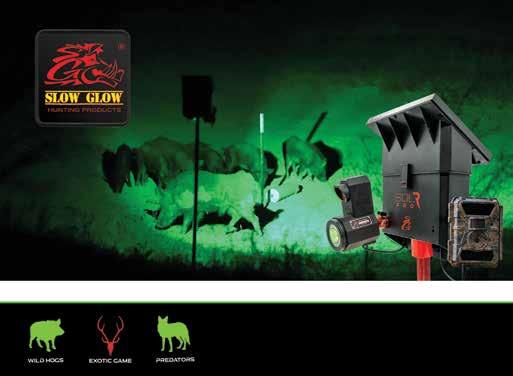



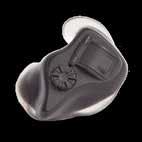

Arkansas bear hunters harvested 765 bears during the 2023 hunting season, topping the record by a margin of 100 bears, according to the Arkansas Game and Fish Commission.
Hunters took 665 black bears during archery, muzzleloader and modern gun seasons in 2020, and harvest remained in the high 400s the next two years.
Last year’s record is likely attributed to an earlier opening day of the bear archery season in Bear Zones 1 and 2. Recent seasons opened on the third week in September to be concurrent with deer archery season, but bear hunters in 2023 were able to get out on Sept. 13, a week and a half earlier, before acorns dropped and increased bear activity at bait stations.
—AGFC
Oklahoma will finally see its hunting and fishing license system overhauled and simplified following the passage of Senate Bill 941, which provides the state’s first license fee increase in more than 20 years.
Oklahoma’s hunting and fishing license framework currently features more than 150 different license and permit combinations that sportsmen and women must navigate to ensure that they are properly licensed. —ODWC
George Chance, of Festus, became the state-record holder after catching a 97-pound bighead carp from the Mississippi River. Chance was bank fishing for catfish with a bottom-bouncing crankbait when he hooked into the fish March 19. The previous pole-andline state record was an 80-pound fish caught from the Lake of the Ozarks in 2004.
Chance was fighting with the fish for around 20 minutes before he finally got it onto the “The more it fought, I saw it’s tail and knew it was some type of carp,” he recalled. “I was able to hook him with a hay hook in order to
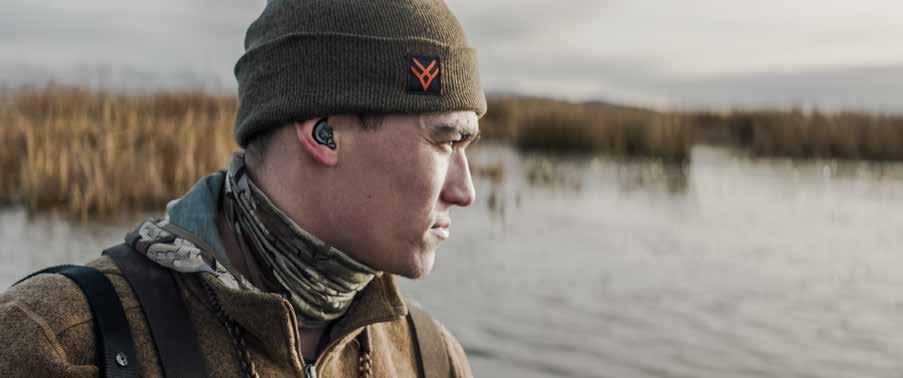

2023-24, with nearly a 5-percent increase in harvest compared to the previous season, according to the latest elk harvest survey report. Hunters spent more than 480,000 recreation days in the field and harvested nearly 29,000 elk.
Wildlife managers estimate the elk population in the state to be about 109,000, with elk in some parts of the state creating damage issues for private landowners.
In the 2023 season, the harvest of cow elk topped 13,000 for the first time over the past decade. —WGFD
For the first time since 2013, the Idaho statewide elk harvest came in below 20,000, a drop of nearly 2,400 animals compared to the prior year.
Fish and Game biologists heard reports from elk hunters who were not finding elk in their usual spots during fall, and suspect weather may have been a significant factor. Additionally, data from radio-collared elk showed some herds stayed on summer range much longer than in other years, even prevented the Department from conducting one of its planned elk surveys.
Elk hunters took home 18,568 elk in 2023, roughly an 11-percent drop in animals harvested compared to 2022.
Utah Division of Wildlife Resources conservation officers are seeking information in two separate cases where a cow elk and 18 Canada geese were killed and left to waste in Emery County earlier this year.
DWR conservation officers received a report on Feb. 10 of a dead cow elk that had been discarded in an area between the power plant and the solar fields near Huntington in Emery County. The elk had been skinned and quartered, but none of the meat was harvested except for the backstraps. The rest of the meat had been left to waste.
Chance took the fish to a nearby recycling center to use their scale, which prompted him to call his local conservation agent.
“They told me it was a state record, and I said, ‘You’ve got to be kidding me.’ Then later they said, “It’s not just a state record, it’s a
The previous world record bighead carp was “I chopped up the fish and put it in my garden,” Chance said. “I’m going to eat it in the form of tomatoes and cucumbers.” —MDC
Delaware Sportsmen’s Caucus driven House Bill 271 passed both the House and Senate unanimously with Congressional Sportsmen’s Foundation testimony and support and is now awaiting Gov. John Carney’s signature. The bill removes game birds from the list of species prohibited from Sunday hunting.
Delaware’s definition of game birds includes waterfowl, rails, wild turkeys, pheasant, quail, chukar, and dove, among others. By lifting the current prohibition, the Delaware Department of Natural Resources and Environmental Control’s Division of Fish and Wildlife will have the authority to establish and regulate season dates, bag limits and enforcement for the hunting of game birds but will gain the ability to add Sundays to the existing game bird seasons.
—DNREC
Wyoming hunters had one of the most successful elk hunting seasons on record in
There was a cow elk hunt that went until Jan. 31, so it is possible the elk was legally harvested during that hunt. However, the meat had been left to waste, which is illegal.
In the second incident, officers received multiple reports of dead geese that were found dumped in various locations near Lawrence and Huntington in Emery County. Some of the 18 geese were located on the ground and some were found hanging on fences and trees. Most of the geese had the majority of their breast feathers plucked, exposing their bellies, but none of the meat had been harvested.
Officers believe the geese were harvested during the 2023–24 waterfowl hunting season, but then were illegally wasted.
Fares Abdo Al Eyani, 41, of Oakland, was sentenced to 12 months and a day in prison, followed by three years of supervised release, for conspiring to export defense articles and attempting to export defense articles.
According to court documents, Al Eyani acquired no less than four firearms with magazines and ammunition, and at least 44 riflescopes, monoculars and goggles with night vision capabilities. In November 2019, Al Eyani attempted to send the firearms to the Sultanate of Oman in shipping containers departing from the Port of Oakland. He concealed the firearms by disassembling them, wrapping them in aluminum foil, and then secreting them within automobiles inside the shipping container. Law enforcement searched the containers and seized the firearms and accessories.



THE LONE STAR OUTDOOR NEWS FOUNDATION CREATES HUNTING AND FISHING OPPORTUNITIES FOR THOSE PEOPLE EAGER TO JUMP HEAD FIRST INTO THE OUTDOORS, BUT WHO LACK THE OPPORTUNITY.
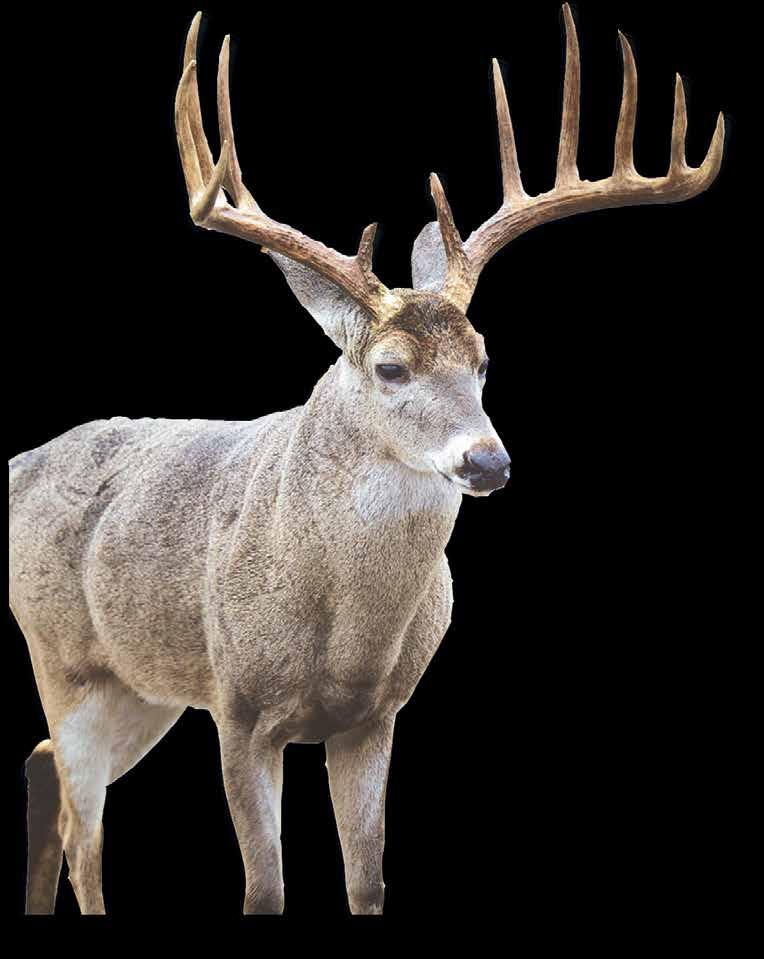





TO DONATE OR FOR MORE INFORMATION CALL (214) 361-22 76 OR DONATE ONLINE AT WWW.LSONFOUNDATION.ORG
APRIL 13
DSC TEXAS PANHANDLE CHAPTER
Amarillo Civic Center (806) 433-5766 panhandledsc.com
WILDLIFE PARTNERS
Super Exotic Wildlife Auction
Bevy Hotel, Boerne wlpauction.com
APRIL 18
ROCKY MOUNTAIN ELK FOUNDATION
Brazos Valley Banquet
Brazos Center, Bryan (979) 220-6139 rmef.org
DALLAS SAFARI CLUB
Pint Night at SITKA Gear
SITKA Gear (972) 980-9800 biggame.org
APRIL 19
WHITETAILS UNLIMITED
Brazos Valley Deer Camp
Brazos Center, Bryan (512) 657-9943 whitetailsunlimited.com
DUCKS UNLIMITED
Rockwall Dinner
Hidden Creek, Heath (972) 757-5357 ducks.org

APRIL 25
OUTDOORS TOMORROW FOUNDATION
Benefit Concert Gilley’s Dallas (817) 410-5054 gootf.com
DUCKS UNLIMITED
Austin Dinner
The Lodge at Grace, Buda (320) 808-9453 ducks.org
NATIONAL WILD TURKEY FEDERATION
Tri-County Longbeards Banquet
Seaton Star Hall, Temple (254) 760-8012 nwtf.org
APRIL 27
ROCKY MOUNTAIN ELK FOUNDATION
Permian Basin Banquet
Bush Convention Center, Midland (432) 889-7565 rmef.org
APRIL 26-27
TEXAS TRAPPERS AND FUR HUNTERS
Spring Rendezvous
Mashburn Events Center, Childress (210) 415-6127 ttfha.com
APRIL 27-28
TEXAS GUN & KNIFE SHOW
Kerrville Expo Hall (830) 285-0575 texasgunandknifeshows.com

MAY 1
DALLAS SAFARI CLUB
Sporting Clays Shoot
Dallas Gun Club, Lewisville (972) 980-9800 biggame.org
DUCKS UNLIMITED
West Houston Banquet
Chateau Crystale (713) 858-7575 ducks.org
MAY 2
DUCKS UNLIMITED
Dripping Springs Dinner
Dripping Springs Ranch Park (512) 965-3633 ducks.org
MAY 9
ROCKY MOUNTAIN ELK FOUNDATION
Central Texas Banquet Exchange Event Center
McGregor (254) 707-0081 rmef.org
DUCKS UNLIMITED
Comal County Banquet
New Braunfels Civic Center (210) 215-5573 ducks.org
MAY 10-11
SHALLOW SPORT OWNERS TOURNAMENT
South Padre Island (956) 233-9489 shallowsporttournament.com

MAY 11
TEXAS DEER ASSOCIATION
TDA Crawfest
Prime Acres Whitetails, Woodville texasdeerassociation.com
MAY 16
NATIONAL WILD TURKEY FEDERATION
Lone Star Longbeards Banquet
Brazos Center, Bryan (979) 219-0286 nwtf.org
DUCKS UNLIMITED
Boerne Banquet
The Cana Ballroom (281) 684-1858 ducks.org
AUSTIN WOODS AND WATERS CLUB
AWWC Archery Social Archery County, Austin austinwoodsandwaters.org
MAY 17-19
NATIONAL RIFLE ASSOCIATION
Annual Meeting & Exhibits


Kay Bailey Hutchison Convention Center Dallas narram.org


Continued from page 9
lures called Darts.
“We were fishing in shallow water with the lures rigged on 1/16-ounce jig heads,” he said.
The coffee-scented Darts are made by the Coastal Brew Bait company, and are available at local tackle shops.
Other colors include nuke juice, watermelon/red, vanilla bean, Laguna lime aid and plum punch. They are made in 5-and 6-inch lengths.
“The Darts have a long and whippy tail and seem to get more bites on a pop/pop/ fall retrieve,” Knipling said. “They mimic a wounded bait fish or fleeing shrimp and have lots of action.”
Knipling said this time of year, the trout are feeding on and around sand pockets and in grass beds. The day they caught all the trout the water was a little off-color. The day before he caught the 9.5, he was
fishing the same area and caught trout to 5.7 pounds. They were fishing out of Port Mansfield, and on those two magic days the trout were feeding along wind-blown shorelines. He said the best bite for the past month or so was on a low tide.
“On those two days the baitfish were holding over sand pockets with nearby grass beds,” Knipling said. “We had a light east wind that set up perfect fishing conditions. The Darts we were using were a peachy coochie color pattern. They look a lot like a shrimp.” Also a tournament fisherman, Knipling said the fishing was good throughout March.
“We had some outstanding fishing on the shallow flats,” he said. “We found that the best time to be on the water was with a falling or low tide with a 10 to 15 mile per hour wind.”




On March 27, the Texas Council Fly Fishers International released an educational series discussing conservation efforts and information on the Guadalupe bass.
The presentation was held through Zoom and began with fisherman Jim Gray sharing Guadalupe bass locations and favorite spots.
“Guadalupe bass are endemic to streams and rivers of the Edwards Plateau in Central Texas,” Gray said. “For wading, my favorite place to fish is the Llano River, Brushy Creek, San Gabriel and Salado Creek.”
Gray recommended “Fly Fishing the Texas Hill Country” by Kevin Hutchinson and “Fly-Fishing Austin & Central Texas” by Aaron Reed as two books that serve as the best resources.
“Any fly box you have for the Hill Country should include poppers, hoppers, Clousers, sliders, attractors and baitfish,” Gray said. “You want a range of flies that can cover the surface, midrange and the bottom.”
Fishing guide, writer and speaker Cari Ray shared casts and tactics for Guadalupe bass.
“I always say consider the size of the flies and the likelihood of the wind when referring to the rod and line weight,” Ray said. “I like a moderate fast to faster action rod and depending on your situation, consider sub-9-foot rod for quicker stroke and shorter level.”
John Botros, Texas Parks and Wildlife Department river access coordinator, discussed the River
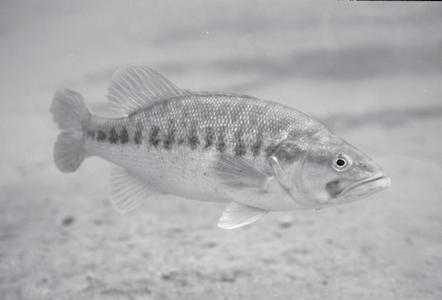
Access and Conservation Areas program in Texas as a demand for river access and increase in angling.
“The RACA program leases private properties to improve access or habitat conservation projects,” Botros said. “We strive to provide a sense of river stewardship to make people want to take care of our rivers.”
Botros included a video that featured Timothy Birdsong from Texas Parks and Wildlife who recognized the Guadalupe bass as the Texas State Fish in 1989, thanks to a campaign from an elementary school class from Decatur.
Efforts to protect the state fish have included habitat restoration programs and conservation stockings of more than 2.4 million of the fish in Hill Country rivers over the last three decades.”



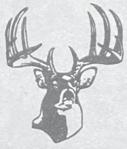


James Crawford, of Sumner, took the top prize, over more than 1,500 other anglers, at the 16th annual Techron Mega Bass by Bass Champs tournament at Lake Fork, billed as the country’s biggest oneday payout tournament. Crawford’s 9.88-ounce largemouth won the angler a Skeeter ZX200 with Yamaha 200 SHO outboard, along with $15,000.
The fish came off of a bed, but the fish hadn’t been there long, Crawford said.
“There were a lot of boats around, and one went through the area a few minutes before I did,” he said. “I went through and saw the fish from 40 feet away in 3 feet of water, so she had just moved up. I
pitched a few different baits at her for 15 minutes and then hooked up on a Texas-rigged creature bait. She jumped three or four times before I was able to lip her.”
Crawford edged out Max Nwanebu, of Fairview, who caught a 9.75-pound fish. Tomas Trevino, of Weatherford, followed in third with a 9.30-pound bass. Other hourly winners of $15,000 were Joey Johnson, of Mansfield, with his 8.99-pound largemouth; Tom Moony, of Quitman (7.99 pounds) and Chad McClendon, of Grapevine (7.22 pounds). Clifton Birmingham, of Kingman, Kansas, rounded out the hourly winners with an “under” on the slot limit lake, at 2.33 pounds, also winning $15,000.
Jaden Parrish, of Liberty, caught a five-bass limit weighing 27 pounds, 11 ounces to win the Phoenix Bass Fishing League on Sam Rayburn Reservoir.
The tournament was the fourth event of the season for the BFL Cowboy Division. Parrish earned $11,052, including the $7,000 Phoenix MLF Contingency Bonus, for his victory.
A fog delay kept Parrish from fully capitalizing on the morning crankbait bite, but he targeted areas with a deep-diving crankbait and a swimbait. His two biggest bass weighed 7 pounds, 12 ounces and 9 pounds, 4 ounces, the Big Bass winner.
Bryan McDonough, of Brookeland, finished second with 21 pounds, 2 ounces, winning $1,796; and Jerry Mason, of Ragley, Louisiana, finished third with 19 pounds, 12 ounces, winning $1,201. —MLF

